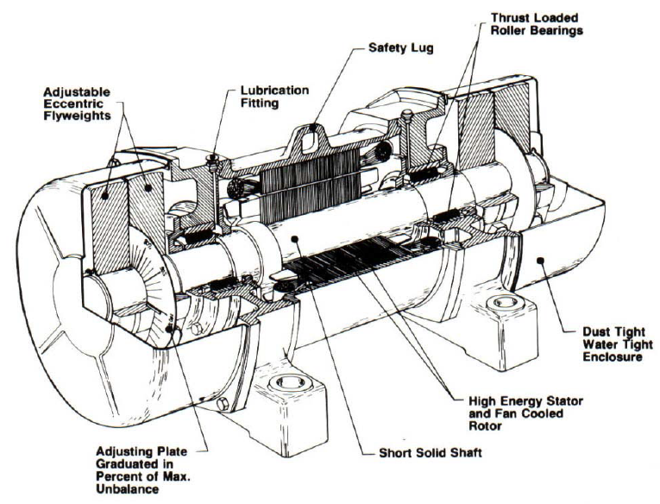
Industrial vibrators represent one of a few methods to implement vibration into a process as a discharge aid. Material vibrators are available in compressed air or electric-driven versions to create vibratory motion. Such motion excites the localized area wherever they're installed.

An electric motor vibrator
Ultimately, different processes will require either an electrically-driven material vibrator or a pneumatically-driven material vibrator. In this AZO blog post, we will outline the benefits and differences of these two types of material vibrators. We’ll also share some other functions (besides being utilized as a discharge aid) that material vibrators can achieve:
How these pieces of equipment function are what separates them
Electric motor vibrators and pneumatic vibrators both perform the same function (shaking), but how they achieve this function is what separates them idealistically. The former uses an electric motor with eccentric weights as a means to provide the mode of action, while the latter uses compressed air to accomplish this task.
The size and weight of the motors suit them for different tasks
Size is one requirement to consider as electric motors tend to be larger and take up more facility space. Weight is another factor. For example, rail cars typically use pneumatically-driven vibrators as they do not require any plugins or much electrical wiring. These vibrators are also typically not as heavy as electrically-driven vibrators, which becomes an advantage when heavy lifting is required.
Economic factors also play a part in the decision between them
Economic factors can also play a part in the decision to implement either a pneumatic or electrically-driven material vibrator. There are many applications where pneumatic vibration is applicable as it is typically easier to implement on a job, vehicle, or portable worksite than power wiring. Still, compressed air is expensive to manufacture.
Such pneumatic airflow is made in a compressor using an electric motor. A pneumatic vibrator, as a device, may be less expensive initially. Still, utility costs can increase the total cost of ownership (TCO) to greater amounts in some applications.
Pneumatic vibrators pose an advantage in extreme combustible dust hazard scenarios
One final advantage for using a pneumatic vibrator pertains to situations in which a manufacturer is moving material that presents an extreme combustible dust hazard. In this scenario, a pneumatically actuated material vibrator could be ideal to minimize or even avoid electric power wiring in hazard zones.
There are multiple functions material vibrators can achieve
Either material vibrator can also be implemented in a facility for other purposes than as a discharge aid. Cement trucks, for example, commonly contain vibrators to help cement flow down shallow chutes.
At times, these vibrators are used in filling operations to densify and compact material. Containers can be efficiently filled as air is squeezed out of the process. Other applications for material vibrators include bulk bag unloaders on the discharge cone or the support table (where the bulk bag is actually set).

Whether pneumatic or electric material vibrators are implemented into a process, these tools are often used in conjunction with other flow aids.
A new, free guide from AZO further elaborates on various mechanical devices that are used to apply energy into material in order to induce flow. “Flow and Functionality: Determining The Proper Discharge Aids For Your Bulk Material Handling Process” contains pertinent information about many machines that are often used in concert with each other (as well as flow agents) to overcome the friction between material and the wall of storage vessels.
If you find that you have any other conveying queries, you can always feel free to speak to an AZO specialist. We have more than seven decades of experience in handling raw materials and shaping ingredient automation along the way. Contact our sales team for any questions on how to help your plant and processes run smoothly.

